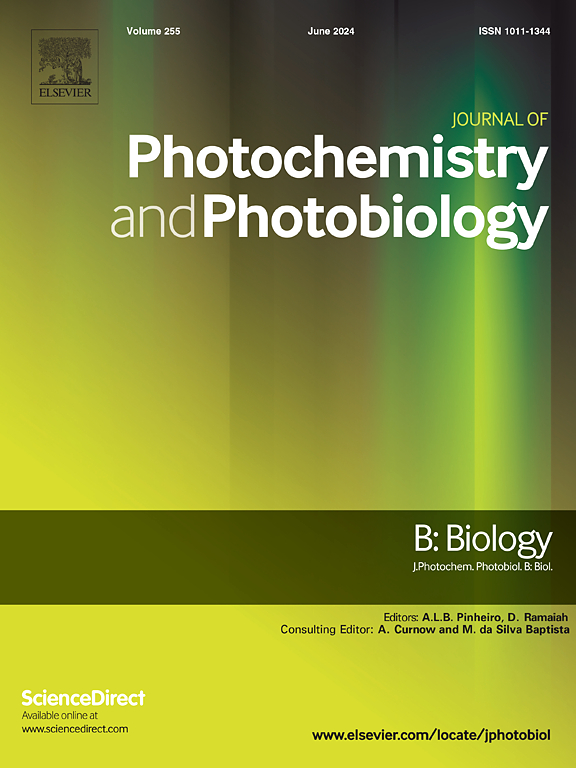The impact of near-infrared-triggered photothermal therapy on collagen organization and wound healing
IF 3.7
2区 生物学
Q2 BIOCHEMISTRY & MOLECULAR BIOLOGY
Journal of photochemistry and photobiology. B, Biology
Pub Date : 2025-09-26
DOI:10.1016/j.jphotobiol.2025.113273
引用次数: 0
Abstract
Soft tissue wounds result in the loss of essential functions, including sensation and barrier protection. Mild photothermal therapy (PTT) has emerged as a promising therapeutic strategy for promoting wound healing and tissue regeneration, primarily through its ability to precisely regulate tissue temperature and thereby influence cellular proliferation and differentiation. In this study, gold nanorods (AuNRs) were employed as photosensitizers and co-cultured with fibroblasts to evaluate the effects of mild PTT on collagen organization and wound healing under the irradiation of 808 nm near-infrared (NIR) laser. AuNRs-mediated photothermal stimulation raised the temperature of the culture medium from 18.0 °C to 37.8 °C within 7 min. This controlled thermal stimulation significantly enhanced fibroblast proliferation and led to a more random distribution of collagen fibers. Moreover, AuNR-mediated mild PTT promoted the differentiation of fibroblast into myofibroblasts and reduced scar tissue formation. These findings highlight the therapeutic potential of mild PTT in soft tissue regeneration by modulating fibroblast behavior and remodeling collagen architecture.
近红外触发光热疗法对胶原组织和伤口愈合的影响。
软组织创伤导致基本功能的丧失,包括感觉和屏障保护。轻度光热疗法(PTT)已成为促进伤口愈合和组织再生的一种有前景的治疗策略,主要是通过其精确调节组织温度从而影响细胞增殖和分化的能力。本研究以金纳米棒(aunr)作为光敏剂,与成纤维细胞共培养,在808 nm近红外(NIR)激光照射下,研究轻度PTT对胶原组织和伤口愈合的影响。arrs介导的光热刺激在7 min内将培养基温度从18.0℃提高到37.8℃。这种受控的热刺激显著增强了成纤维细胞的增殖,并导致胶原纤维的更随机分布。此外,aunr介导的轻度PTT促进成纤维细胞向肌成纤维细胞的分化,减少疤痕组织的形成。这些发现强调了轻度PTT通过调节成纤维细胞行为和重塑胶原结构在软组织再生中的治疗潜力。
本文章由计算机程序翻译,如有差异,请以英文原文为准。
求助全文
约1分钟内获得全文
求助全文
来源期刊
CiteScore
12.10
自引率
1.90%
发文量
161
审稿时长
37 days
期刊介绍:
The Journal of Photochemistry and Photobiology B: Biology provides a forum for the publication of papers relating to the various aspects of photobiology, as well as a means for communication in this multidisciplinary field.
The scope includes:
- Bioluminescence
- Chronobiology
- DNA repair
- Environmental photobiology
- Nanotechnology in photobiology
- Photocarcinogenesis
- Photochemistry of biomolecules
- Photodynamic therapy
- Photomedicine
- Photomorphogenesis
- Photomovement
- Photoreception
- Photosensitization
- Photosynthesis
- Phototechnology
- Spectroscopy of biological systems
- UV and visible radiation effects and vision.

 求助内容:
求助内容: 应助结果提醒方式:
应助结果提醒方式:


